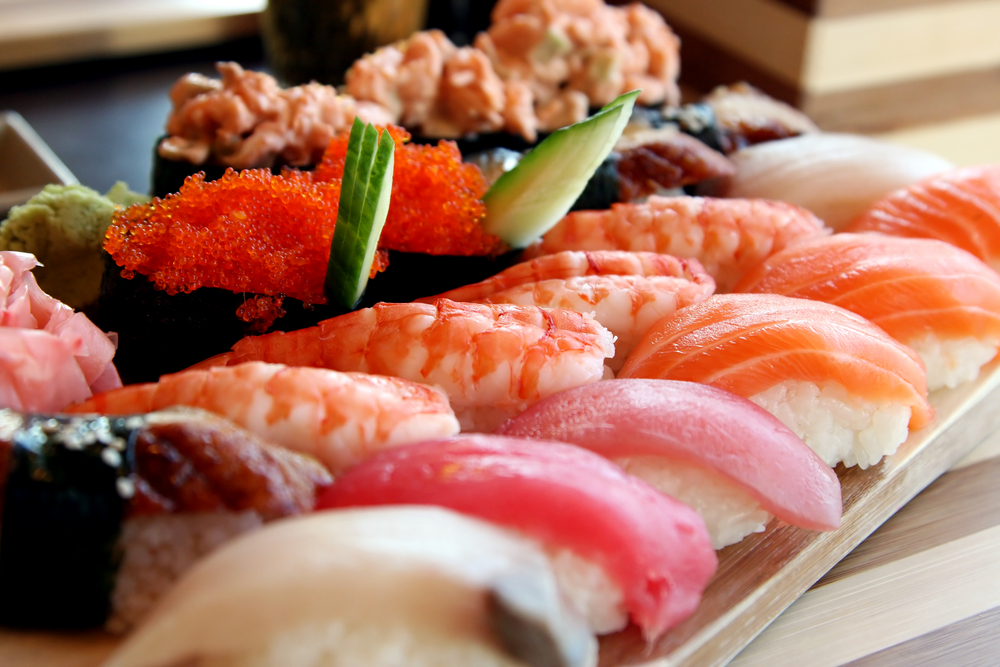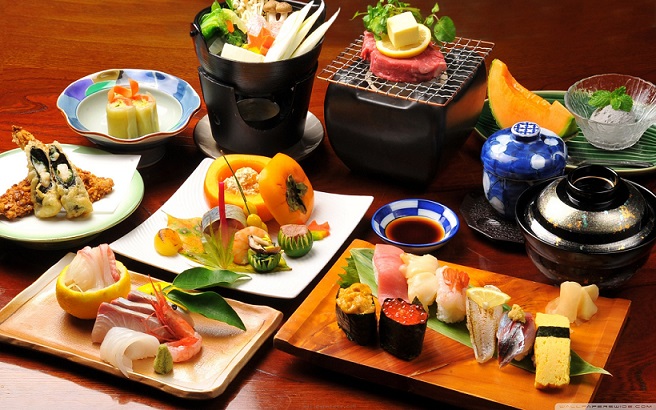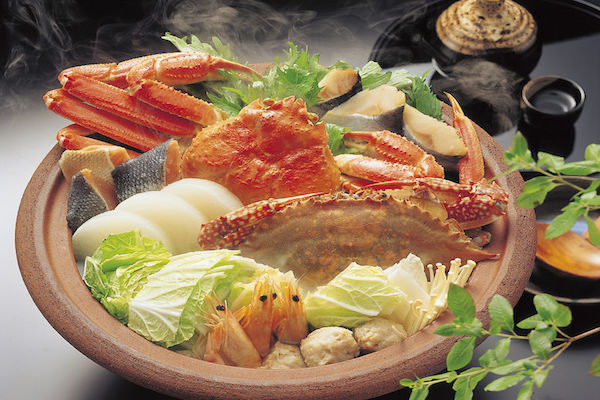Japanese Cuisine
Healthy Fresh Fish Seafood Rice And Vegetables
Japanese cuisine: Tempura, sukiyaki, sashimi, sushi – even the words used to describe the most basic of Japanese dishes are exotic and beautiful. Japanese cuisine is easily one of the healthiest in the world, with its concentration on fresh fish, seafood, rice and vegetables. The pungent sauces and delicate flavors of fresh foods complement each other beautifully, and the methods of presentation turn even simple meals into beautiful events. The Japanese have easily a dozen different names for rice, depending on how it is prepared and what it is served with.
The most common meal is a rice bowl, a bowl of white rice served with various toppings or ingredients mixed in. So popular is it that the Rice Bowl has even made its way into the world of Western convenience foods alongside ramen noodles. Domburi is a bowl of rice topped with another food: domburi tendon, for instance, is rice topped with tempura and domburi gyudon is rice topped with beef. The Japanese adopted fried rice from the Chinese, and a century ago, when curry was first introduced, developed Kare Raisu, curry rice.
It is now such a popular dish that there are many fast-food restaurants that serve several versions of it in take-away bowls. Besides white rice being served as a side dish, Japanese cuisine also features onigiri – rice balls wrapped in seaweed, often with a ‘surprise’ in the middle, and kayu, a thin gruel made of rice that resembles oatmeal. As an island nation, it’s not surprising that seafood is featured in Japanese cuisine. Sushi and sashimi both are raw fish and seafood with various spices.
Impeccably fresh fish is the secret to wonderful sashimi and sushi, served with wasabi and soya sauce. The Japanese love of beauty and simplicity turns slices and chunks of raw fish into miniature works of art. Fish sliced so thin that it’s transparent may be arranged on a platter in a delicate fan that alternates pink-fleshed salmon with paler slices of fish.

Sushi is typically arranged to best display the colors and textures to their best advantage, turning the platter and plate into palettes for the artistry of the chef. Traditionally, meat plays a minor role in the Japanese diet, though it has been taking a larger and larger role over the past fifty years as Japan becomes more westernized. Beef, chicken and pork may be served with several meals a week now. One of the more popular meat dishes is ‘yakitori’ – chicken grilled on a skewer and served with sauce.
A typical quick lunch might include a skewer of yakitori and a rice bowl with sushi sauce. In an interesting twist, Japan has imported dishes from other cuisines and ‘Japanized’ them, adopting them as part of their own cuisines. Korokke, for instance, are croquettes adopted from those introduced by the English last century.
In Japan, the most common filling is a mixture of mashed potatoes and minced meat. Other Soshoyu – western dishes that have made their way into Japanese everyday cuisine include ‘omuraisu’, a rice omelet, and hambagau, the Japanized version of an American hamburger.
Japanese Cuisine Crab Nabe
InternetBusinessIdeas-Viralmarketing Home Page
Tweet
Follow @Charlesfrize
We Are Helping 1000 Businesses Amplify Their Online Presence










New! Comments
Have your say about what you just read! Leave a comment in the box below.